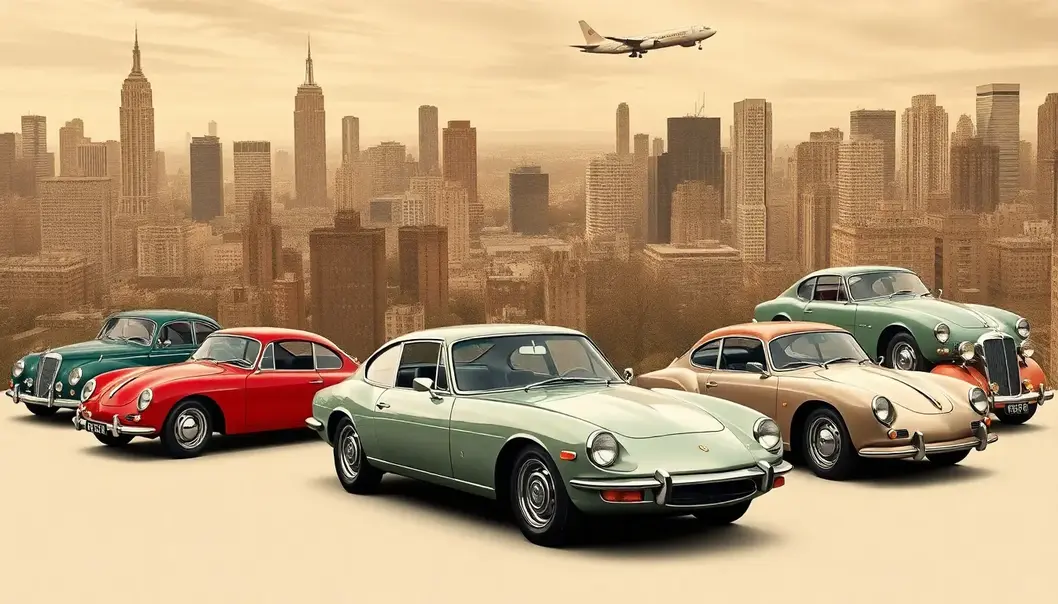Cruising down memory lane reveals that automobiles have not only been a mode of transport but echo the sartorial elegance of their time. The sleek curves of the past have rolled with grace into the bolder, more daring lines of today. Each decade presents a catwalk of automotive fashion, where engineering meets the runway. From futuristic fantasies to classic icons, car design has long been an emblem of contemporary taste and culture. Join us as we explore car design evolution, a journey that has mirrored runway trends, showcasing how automotive looks have mirrored and even influenced fashion throughout the years.
The 1950s Glamour and the Dawn of Aesthetic Revolution

The 1950s mark a timeless epoch where automotive design echoed the cultural opulence of a post-war society, eager to embrace creativity and freedom. This era was characterized by the marriage of indulgence and functionality, reminiscent of the era’s haute couture. Cars of the 1950s emerged as rolling canvases, bearing the imprint of designers steeped in the intricate worlds of art, fashion, and burgeoning pop culture.
Tailfins became the quintessential symbol of 1950s car design, likened to the swooping lines of evening gowns caressing the roads with elegance and grace. These sculpted pieces of metal weren’t merely aesthetic; they heralded a shift toward a future brimming with optimism and exploration. Chrome glittered like jewelry, accentuating the bold shades of pastel that adorned the vibrant automobile bodies, a direct reflection of dynamic fashion trends of the time.
The synergy between automotive craftsmanship and fashion was undeniable. As Grace Kelly graced the screen with her impeccable style, car designers paralleled the accented waistlines and flowing skirts of the period with voluptuous curves and expansive car hoods. The visual dialogue between what people wore and what they drove was a spectacle of chic harmony. Elvis Presley, with his audacious charisma, mirrored the cars that roared with the same youthful vibrancy, weaving a connection that made vehicles an extension of personal identity, much akin to prized designer handbags.
In essence, the 1950s positioned cars as more than a means of transportation; they became canvases of personal style and status. They captured the imagination of those who craved individuality and flair, cementing their place as symbols of luxury and taste, reflective of a society reveling in newfound prosperity. The chrome-detailed automobiles, with their dreamy colors and polished exteriors, resonated with a populace that celebrated refined aesthetics and innovation in equal measure.
The Bold Strides of the 1980s and Modern Dynamic Forms

Zooming into the audacious 1980s, automotive design experienced a fervent transformation, mirroring the exuberance of the decade’s cultural scene. Vehicles emerged with angular lines, embodying the power suits worn by city dwellers and the rebellious aesthetics celebrated in punk movements. This was an era where cars weren’t just modes of transport; they became expressions of vitality and assertiveness.
The period’s design ethos capitalized on sharpness and dynamism, creating silhouettes that projected force and speed. The streamlined forms drew inspiration from sleek urban environments and the polished minimalism prominent in fashion. Car exteriors sported clean cuts and metallic finishes, akin to the decade’s architectural evolutions.
These design choices reflected a broad, cultural narrative—one centered on energy, rebellion, and an unwavering drive toward modernism. Just as fashion redefined styles with dramatic interpretations, automotive engineering embraced technological advancements that reformulated the standard of beauty and performance.
Aerodynamic shapes weren’t just aesthetic; they served functional purposes, enhancing speed and efficiency. This was the dawn of an era where the line between form and function blurred, driven by a collective societal pursuit for progress. Motors roared with a new intensity, mirroring the edgy music that often accompanied them.
As the decade drew to a close, the cars stood as icons of a culture that celebrated resilience, innovation, and an unyielding thirst for evolution. The trajectories set during this time continue influencing contemporary designs, showcasing a legacy where automotive forms encompass more than metal and engine. They echo the narrative of an era that prized audacious spirits and transformative ideas.
Final words
The journey of car design through the decades is a vivid tapestry of fashion interplay, where each curve, line, and edge tells a story of style evolution. Cars have echoed, if not influenced, the shifting fashion landscapes, offering a unique canvas for artistic expression. They continue to inspire and be inspired, forging an unbroken dialog between the runway and the road. As we move toward an increasingly innovative future, one thing remains timeless – the interconnected language of beauty and design that bridges the worlds of fashion and automobiles.
Ready to drive your style forward? Explore the latest in automotive elegance at our showroom. Witness timeless beauty and modern innovation today!
Learn more: https://www.stylishcars.com/showroom
About us
StylishCars offers a curated selection of the latest vehicles that blend timeless beauty with modern innovation. Visit our showroom for an unparalleled experience in style and performance.

